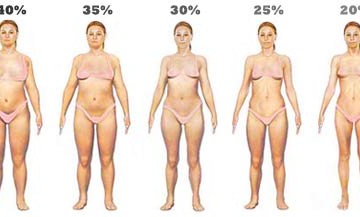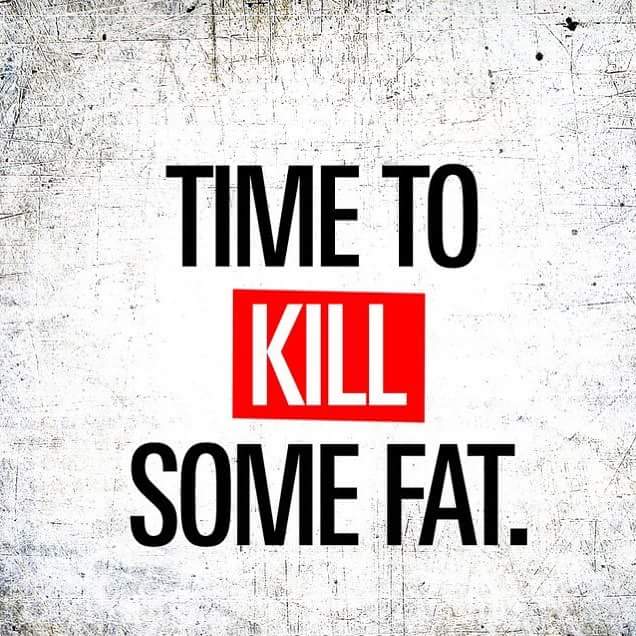The Issue Of Visceral Fat and 10 Foods to Fight It
The Skinny or Skinny Fat

There’s a common misconception that body weight is a reliable and accurate depiction of health. However, the number on a scale says very little about one’s level of fitness, body fatness, fat storage patterns, and levels of lean body mass.
Typically, an “ideal” or “normal” weight is calculated as a ratio of body weight to height.
The most commonly used tool is called the Body Mass Index (BMI), which is a person’s
weight (in kilograms) divided by his/her height (in meters) squared (i.e., kg/m2). Using
this ratio, the BMI separates folks into the following categories:
• Underweight (BMI < 18.5)
• Normal weight (BMI 18.5 – 24.9)
• Overweight (BMI 25 – 29.9)
• Obese (BMI > 30)
Hence, the notion of “normal” weight is born, but as mentioned above, there are many limitations associated with the BMI and using this avenue to assess health and fitness.
Along those lines, recent research suggests that where folks store body fat—even if
they fit into the “normal weight” category—may drastically increase their risk of disease and death.
In a study published in the journal Annals of Internal Medicine, a group of researchers led by Dr. Francisco Lopez-Jimenez, director of preventive cardiology at the Mayo Clinic, examined 14 years worth of data including over 15,000 study participants to determine the potential connection between “normal-weight obesity” and the risk of cardiovascular disease and death. They found that folks who are “normal weight” but store an excessive amount of fat in their mid-sections were more than twice as likely to
die from cardiovascular disease compared to “obese” people whose body fat was more equally distributed throughout their bodies.
To put the increased risk of disease and death into perspective, Dr. Lopez-Jimenez said,
“Being normal weight with mid-section obesity is comparable to smoking a half to a full pack of cigarettes daily.”
A number of important lessons and practical applications can be gleaned from this research and information. For one, it’s possible to be “normal weight” and “metabolically obese,” which Dr. Lopez-Jiminez and colleagues have defined as having:
• Normal BMI
• High visceral fat
• High body fat percentage
• Low muscle mass
• Reduced insulin sensitivity
• High blood sugar
• High triglycerides
• Reduced HDL cholesterol
Conversely, it’s possible to be “obese” yet “metabolically healthy,” which involves
increased levels of body fat, low levels of visceral fat, a normal metabolic profile, and
high insulin sensitivity. Some refer to this as “fit but fat.”
Secondly, using a ratio of body weight to height (i.e., BMI) can be a relatively poor indicator of health and fitness. With that in mind, it’s important to use other measurements to determine health risk. While body composition testing (i.e., ratio of fat to lean mass) is arguably the most accurate means to discern health status, using waist circumference and waist-hip ratios may be alternative options.
In general, women who have a waist circumference greater than 35 inches and men whose waist measurement is 40 inches or more are considered to have “central obesity” and be at “substantially increased” risk for cardiovascular disease and metabolic complications.
With that said, according to the World Health Organization (WHO), women with a waist circumference greater than 31.5 inches and men with a waist circumference greater than 37 inches are at an “increased” risk for metabolic complications. Some research suggests that waist-hip ratio may be an even better predictor of health risk than waist circumference. According to the WHO and other professional health organizations, abdominal obesity is defined as a waist–hip ratio of 0.85 for females and 0.9 or more for men, and folks that fit into these categories are considered to be at “substantially increased” health risk because of their fat distribution.
There appears to be a number of factors that contribute to excessive storage of belly fat, including some that may be out of your control, including:
• Age
• Gender (e.g., men are more likely to accumulate fat in the android pattern)
• Sex hormones (e.g., low testosterone in males is associated with increased
visceral belly fat) [Note that sex hormones may be modified by lifestyle and
behavioral factors.]
• Genetics
• Ethnicity (e.g., African-American and Hispanic populations seem to be at a higher
risk)
• Central and peripheral nervous systems (e.g., endocannabinoid system)
Having said that, there are several modifiable lifestyle and behavioral factors, well within
your control, that can be addressed to prevent the accumulation of and/or reduce the amount of existing visceral fat.
Exercise
A sedentary lifestyle, an overall lack of physical activity, and low levels of fitness
are associated with abdominal obesity. As mentioned above, it should be noted that
“normal-weight obesity” is typically associated with lower levels of muscle mass. This is often described as being “skinny fat.”
Fortunately, a number of studies have examined the impact of exercise on visceral
fat, and while the exact amount (i.e., volume) and intensity is still being investigated, a substantial body of evidence suggests that a combination of resistance training and aerobic conditioning (including moderate and intense cardiovascular activity) may be optimal to reduce/attenuate abdominal obesity. The additional advantage to including resistance training is that it is the primary means by which to increase muscle mass, and it is also very effective at improving carbohydrate tolerance and insulin sensitivity. According to the American College of Sports Medicine (ACSM), a combination of moderate- to high-intensity exercise performed for a total of at least 250 minutes per week
(i.e., 5 – 6 days of 45 – 60 minutes of exercise) is associated with significant weight loss.
Next blog
Just to recap.
We had a look at Body Mass Index or BMI and the inherent limitations of it when determining health. We had a wheel around being normal weight and still having obesity in the mid- section. The whole article today was just a continuation of what we explored yesterday. Visceral fat is what we will be exploring thus whole week in the health sector. Yesterday we started on visceral fat and statistical studies and some history around obesity. We saw that obesity has worsened with all the helpful research of the modern world. I examined various negative effects of obesity that span across all body types etc.
So on our next episodic adventure into our deep dive on health we will be examining stress management and the role it plays in body fat.
Previously
In 1947, French professor and physician Jean Vague first reported in a French medical journal clinical observations that patients with a host of health issues. Vague identified two different body shapes representing two distinct ends of the obesity spectrum...

Do remember to upvote bofore you go and follow me because we are about to kick some fat!

@originalworks
The @OriginalWorks bot has determined this post by @thelifestyler to be original material and upvoted it!
To call @OriginalWorks, simply reply to any post with @originalworks or !originalworks in your message!
To enter this post into the daily RESTEEM contest, upvote this comment! The user with the most upvotes on their @OriginalWorks comment will win!
For more information, Click Here!
Special thanks to @reggaemuffin for being a supporter! Vote him as a witness to help make Steemit a better place!
Perfect
Nice post.
@alchemage has voted on behalf of @minnowpond. If you would like to recieve upvotes from minnowponds team on all your posts, simply FOLLOW @minnowpond.
This post was resteemed by @resteembot!
Good Luck!
Curious? Check out:
The @resteembot users are a small but growing community.
Check out the other resteemed posts in resteembot's feed.
Some of them are truly great.